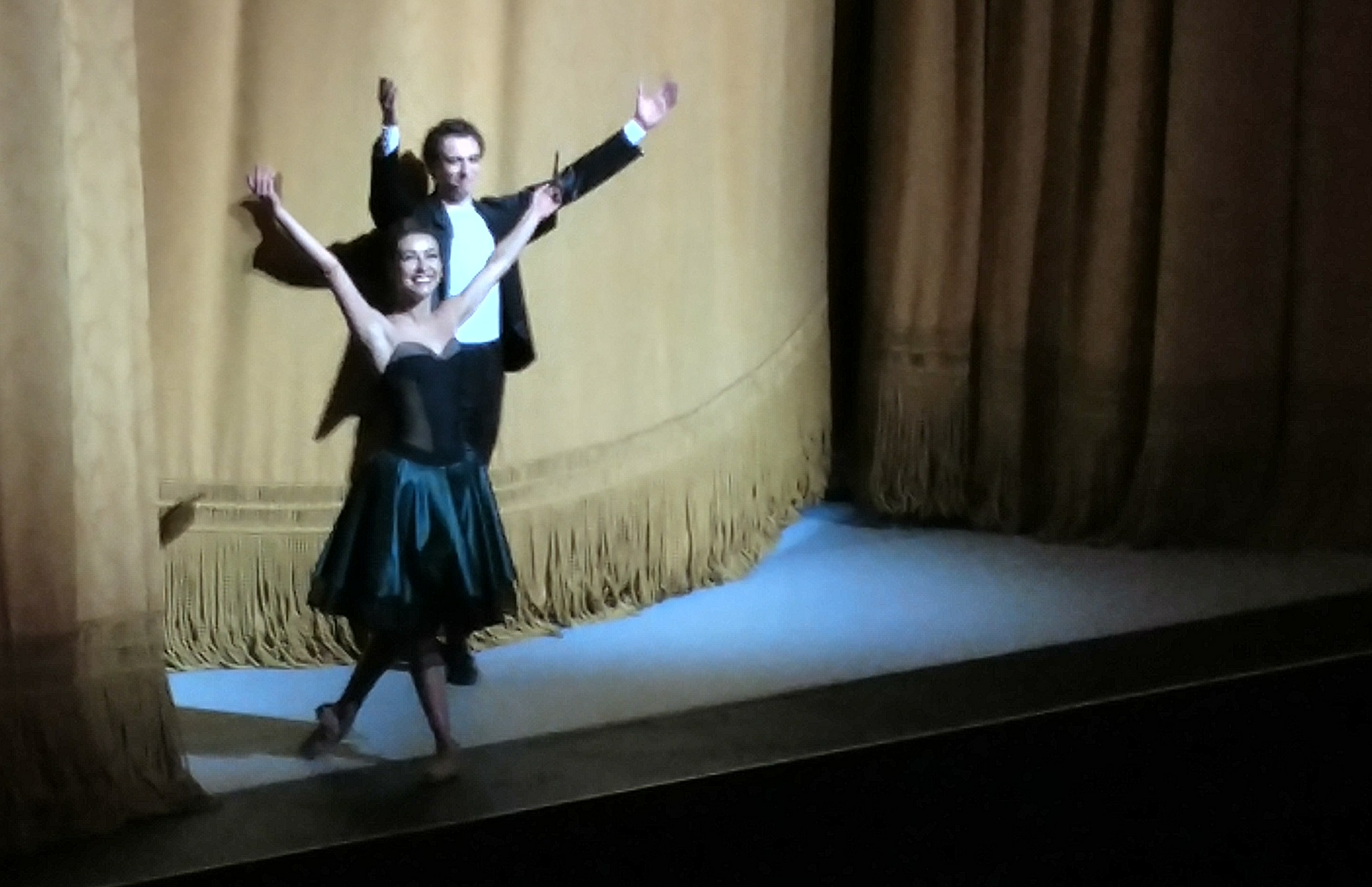People forget that Shakespeare’s The Taming of the Shrew starts with an induction in which a drunken vagabond is to be regaled with a theatrical performance of what is sometimes mistaken for the whole play. The Kate-Petruchio shenanigans is, in short, a play-within-a-play, an imagined world of sex-play and power relations, perhaps challenging to, but also consistent with, the prevailing patriarchy. Shrew is one of those plays, like Othello in respect to racism, Merchant of Venice to anti-Semitism, and The Tempest to colonialism, so written as to invite the turning upon itself of a critical eye, even as its own stance toward the oppression it portrays is ambiguous. That the taming of a woman by a man is a play-within-a-play makes possible the exposure of patriarchy as an act, a construction rather than an innate reality.
The Bolshoi Ballet has brought an extraordinary version of the tale to the Lincoln Center Festival, and it too begins with an induction. As the lights shift to show mode and the orchestra makes its final preparations, a tall sinuous woman, elegantly attired in a black pant suit, strides before the curtain, acknowledges the musicians, sits on the lip of the stage, kicks off her heels, bends her naked toes into the improbable points of which a ballerina’s are capable, and meticulously applies ballet slippers to her feet. The curtain opens, and she enters the ballet through the part, going from “reality” to play, from a broken fourth wall to a solid one. Everyone, it turns out, wears pink slippers, although their costumes, by Augustin Maillot, are of a modern period (but not contemporary). This is a show, and in being so it is a site of freedom and critique. Modern women can play at submission; men can expose their colors and say it’s only show; that nothing is as neat and tied up as that can be speculated freely.
The woman turns out to be The Housekeeper, danced on Thursday by the remarkable Victoria Litvinova, who continues, a sly presence throughout, to orchestrate the goings on. The choreographer, however, is Jean-Christophe Maillot, who has worked a wonder with the story, pairing it with a seamless mélange of music by Dimitri Shostakovich, including his orchestration of “Tea for Two”, accentuating a ’20s ambiance that isn’t exactly stated. The geometric elegance of Ernest Pignon-Ernest’s set (curved stairways in the first act, square columns in the second) provides a playing area more sculptural than scenic. Yet for all the abstraction, the dancers are humanly convincing. They are actors, and not in a mugging, indicating, overwrought sense: the feel for character, situation, and circumstance is pervasive, encouraged, surely, by Maillot’s choreography. At times they simply stand, sit or walk, the latter not necessarily with the balletic stride we are familiar with. Mostly, of course, they are overtly dancing, but the steps are dazzlingly simple, in combinations so intricate as to appear both natural and stylized. There are feet like pincers, legs like ice picks, backs like pliant branches, yet they are organically convincing, and suspend, at times, the knowledge that this is ballet: it is just life, of whatever sort.
From the strength of Malliot’s staging emerges, in this most rollicking of sex comedies, a sense of the tragic. At its core is the wedding night scene, when Petruchio, having carried Katherina away like a caveman with a club, alternately attacks her and plays coy. The back-and-forth, danced, when I saw it, by Denis Savin and Kristina Kretova, is, in a way, revealed as a game, something these two are “into”, but it is a dark sort of foreplay. There’s a moment when he hooks her in his elbow in a manner so violative that it made me gasp. It’s a sustained choreography of erotic struggle, mutual seduction, and ambiguous desire, Strindbergian in its complexity, a thing of both beauty and psychic disturbance. Savin and Kretova were creatures of nature in it, something primal tearing at the civilizing skin of their art. Around the edges lurks the servant Grumio (danced by a sub whose name I didn’t catch), whom Malliot has made into a Mephistophelean figure, lurching and bald.
The Bolshoi gives us not just a great treatment, in balletic form, of Shakespeare’s theme, but a restorative one. It is, I hasten to add, entertaining, as well, with copious charm and high comedy atop the tragic undercurrent. The “Tea for Two” segment is delightful, and the comic fulfillment of all the right couples paired is intact and satisfying. Bianca and Lucentio’s romance (Anastasia Stashkevich and Artem Ovcharenko, the night I was there) is a touching counterweight to the drama of wills at the center. The ballet, at two hours, is just the right length, and the music, under the direction of Igor Dronov, is intoxicating. Even the curtain call added something. I think I’ve never seen anyone more luminous in one than Kretova, which made me recall all the more the Stygian ambiguity of her performance.
THE TAMING OF THE SHREW continues through July 30 at Lincoln Center Festival. Click here for info. Pictured are Denic Savin and Kristina Kretova at the curtain call.
